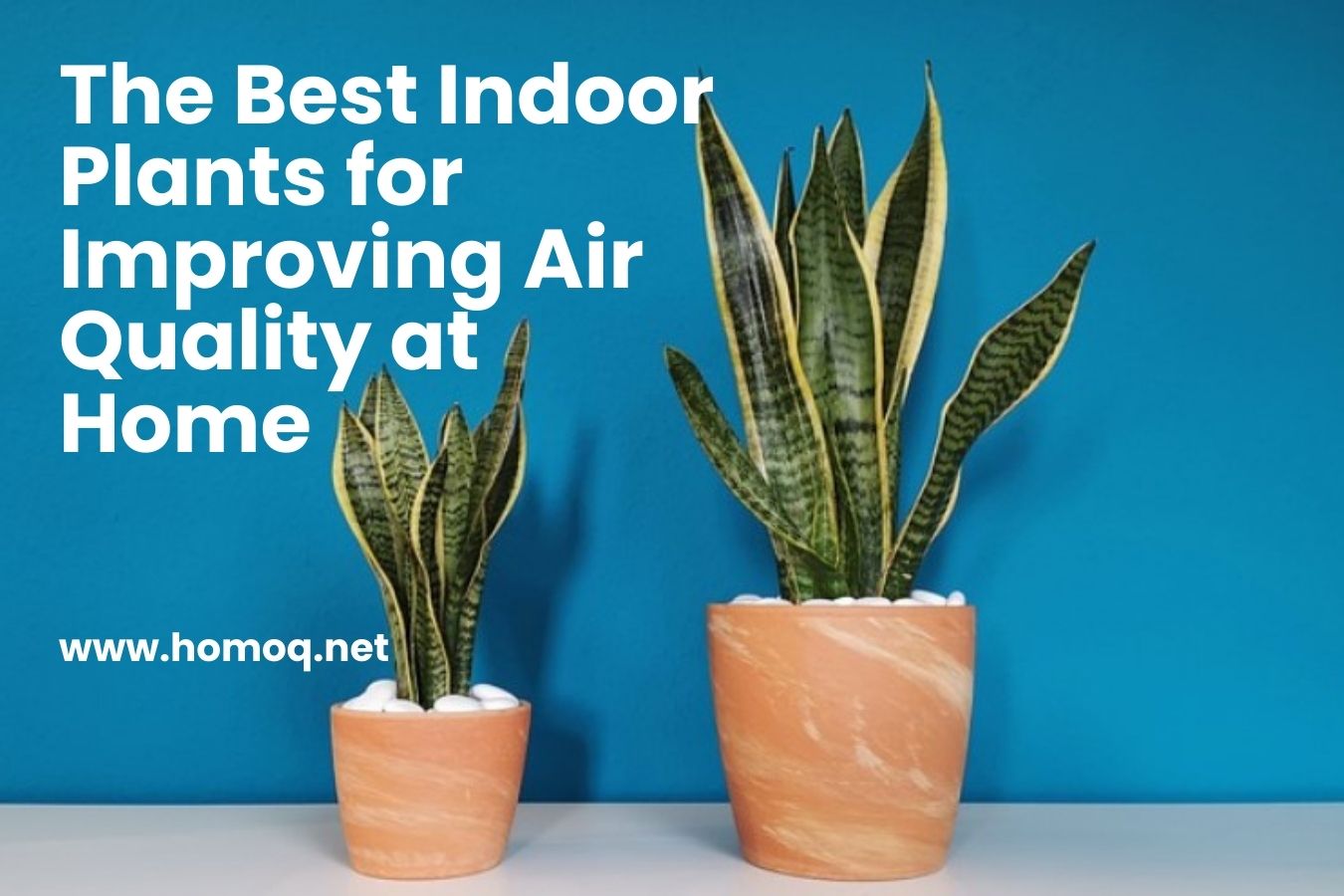Indoor plants are more than just decorative elements; they can improve air quality, boost mood, and enhance overall well-being. With increasing awareness about the harmful effects of indoor pollutants, adding air-purifying plants to your home is a simple and effective solution. This article explores the best indoor plants for improving air quality and how to care for them.
Why Indoor Plants Matter for Air Quality
Indoor air pollution can stem from various sources, such as cleaning products, furniture, and poor ventilation. Plants act as natural air purifiers by absorbing carbon dioxide and releasing oxygen during photosynthesis. Many also filter harmful toxins like formaldehyde, benzene, and ammonia.
Top Indoor Plants for Air Quality
Snake Plant (Sansevieria trifasciata)
Also known as the “Mother-in-Law’s Tongue,” the snake plant is a low-maintenance option.
- Air-Purifying Properties: Removes toxins like formaldehyde, xylene, and toluene.
- Care Tips:
- Light: Thrives in low to bright indirect light.
- Water: Water sparingly, allowing the soil to dry between waterings.
Peace Lily (Spathiphyllum)
The peace lily is a stunning plant known for its elegant white blooms.
- Air-Purifying Properties: Eliminates mould spores and harmful gases, including carbon monoxide.
- Care Tips:
- Light: Prefers low to medium light.
- Water: Keep the soil moist but avoid overwatering.
Spider Plant (Chlorophytum comosum)
Spider plants are popular for their resilience and ability to thrive in various conditions.
- Air-Purifying Properties: Removes carbon monoxide and xylene.
- Care Tips:
- Light: Bright, indirect sunlight is ideal.
- Water: Water weekly; avoid letting the soil dry out completely.
Aloe Vera
Known for its medicinal properties, aloe vera is also an excellent air purifier.
- Air-Purifying Properties: Filters benzene and formaldehyde from the air.
- Care Tips:
- Light: Needs bright, indirect sunlight.
- Water: Water deeply but infrequently, allowing the soil to dry completely.
Areca Palm (Dypsis lutescens)
This lush, tropical plant is perfect for adding greenery and cleaning the air.
- Air-Purifying Properties: Removes carbon dioxide and releases a large amount of oxygen.
- Care Tips:
- Light: Prefers bright, indirect sunlight.
- Water: Water regularly to keep the soil consistently moist.
Boston Fern (Nephrolepis exaltata)
Boston ferns are natural humidifiers and excellent for dry indoor environments.
- Air-Purifying Properties: Removes toxins like xylene and formaldehyde.
- Care Tips:
- Light: Requires bright, indirect light.
- Water: Keep the soil damp and mist regularly to maintain humidity.
Rubber Plant (Ficus elastica)
Rubber plants are attractive and highly effective at removing toxins.
- Air-Purifying Properties: Filters airborne toxins like formaldehyde.
- Care Tips:
- Light: Thrives in medium to bright indirect light.
- Water: Allow the soil to dry slightly between waterings.
Dracaena
With its striking foliage, dracaena is a stylish addition to any room.
- Air-Purifying Properties: Removes harmful chemicals like benzene and trichloroethylene.
- Care Tips:
- Light: Prefers filtered light or partial shade.
- Water: Keep the soil moist but avoid overwatering.
Tips for Maximising Air-Purifying Benefits
- Group Plants Together: Create clusters to boost oxygen production and toxin removal.
- Rotate Plants: Move plants to different spots for better light and air exposure.
- Regular Maintenance: Dust leaves to ensure optimal absorption of air pollutants.
- Choose the Right Soil: Use soil that promotes healthy root growth and drainage.
How to Choose the Right Plants for Your Space
- Light Conditions: Assess the natural light in your home and select plants accordingly.
- Humidity Levels: High-humidity plants like ferns are great for bathrooms, while succulents thrive in drier areas.
- Space Availability: Consider compact plants like aloe vera for smaller spaces and larger ones like the areca palm for open areas.
- Pet Safety: Ensure your chosen plants are non-toxic to pets if you have animals at home.
Benefits of Indoor Plants Beyond Air Quality
- Stress Reduction: Plants can reduce stress and create a calming environment.
- Enhanced Focus: Greenery improves concentration and productivity.
- Aesthetic Appeal: Indoor plants add a touch of nature and beauty to your decor.
- Humidity Regulation: Many plants release moisture, helping maintain indoor humidity levels.
Common Mistakes to Avoid
- Overwatering: Too much water can lead to root rot.
- Ignoring Light Needs: Place plants in appropriate light conditions for their species.
- Neglecting Care: Regularly prune, dust, and water your plants to keep them healthy.
- Choosing the Wrong Plant: Select plants that match your lifestyle and home environment.
Conclusion
Introducing air-purifying plants into your home is a simple yet effective way to improve indoor air quality while enhancing your living space. From low-maintenance options like the snake plant to humidity-loving ferns, there’s a plant for every space and skill level.
Start incorporating these green wonders today and enjoy the health benefits and beauty they bring to your home!

